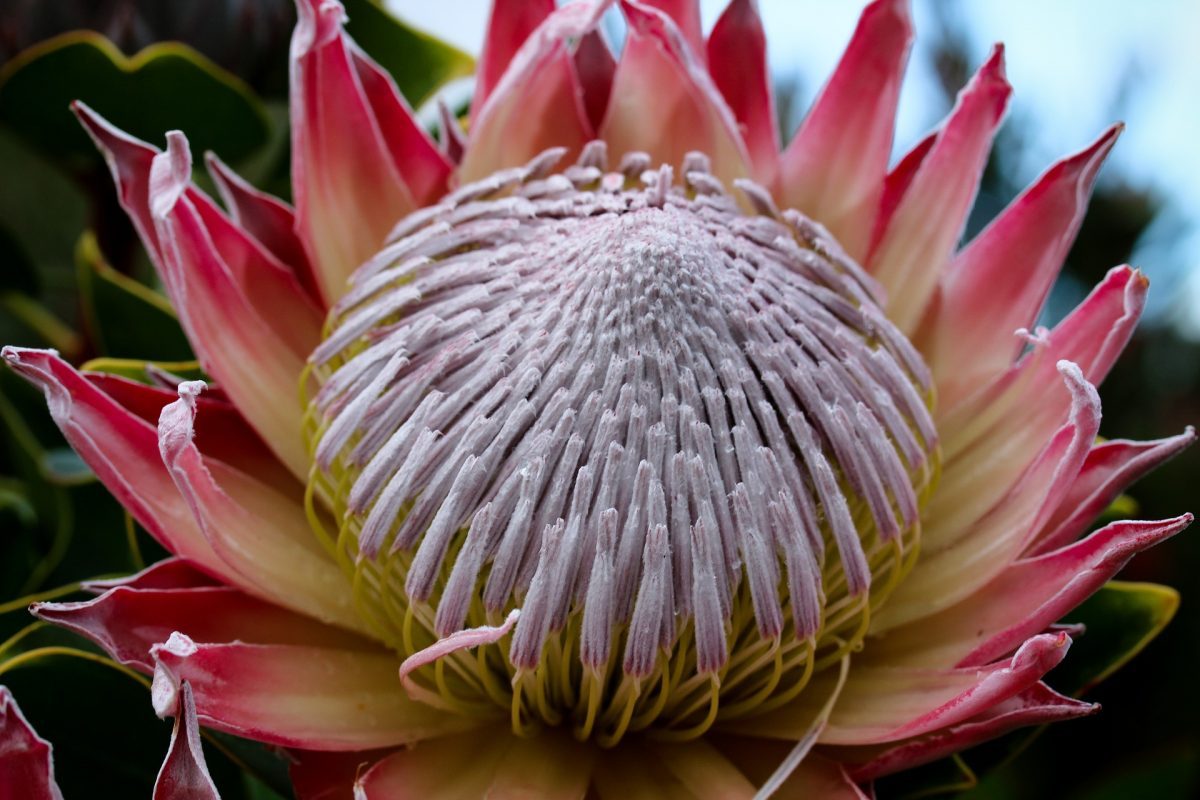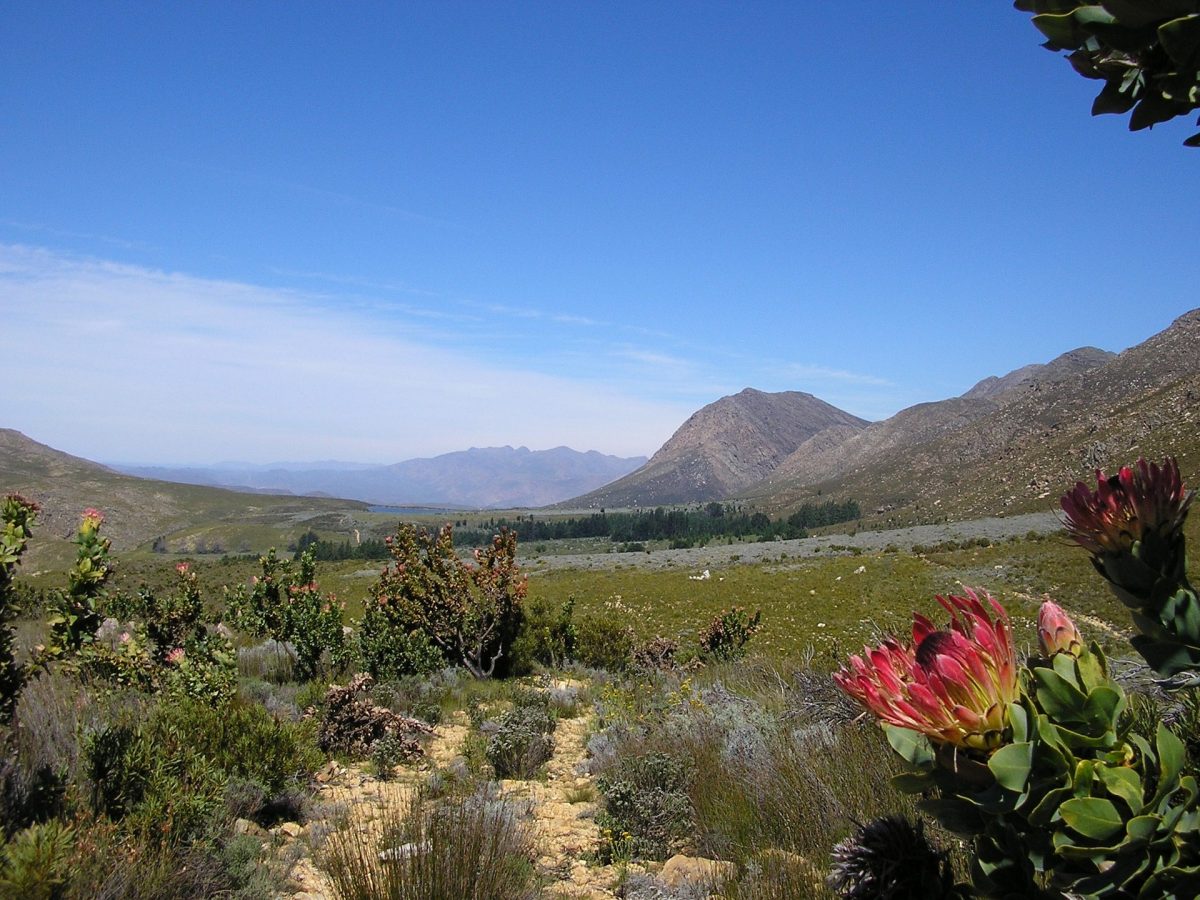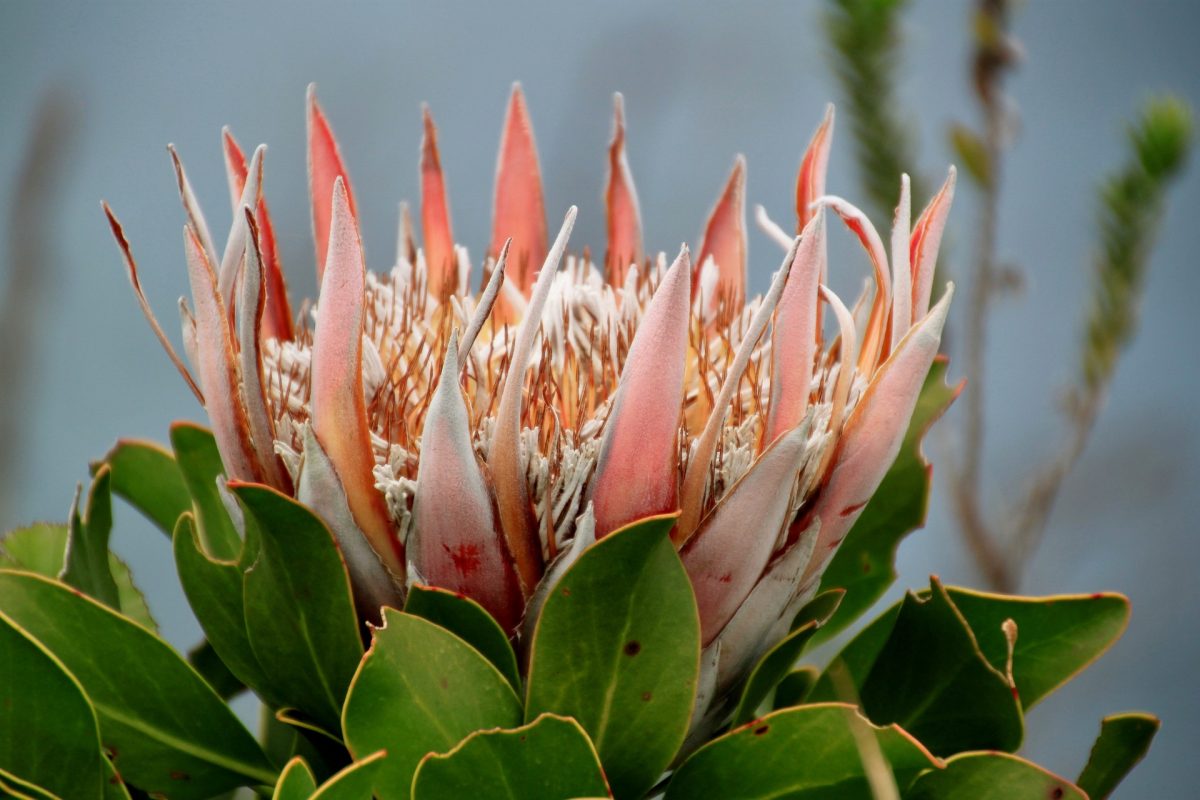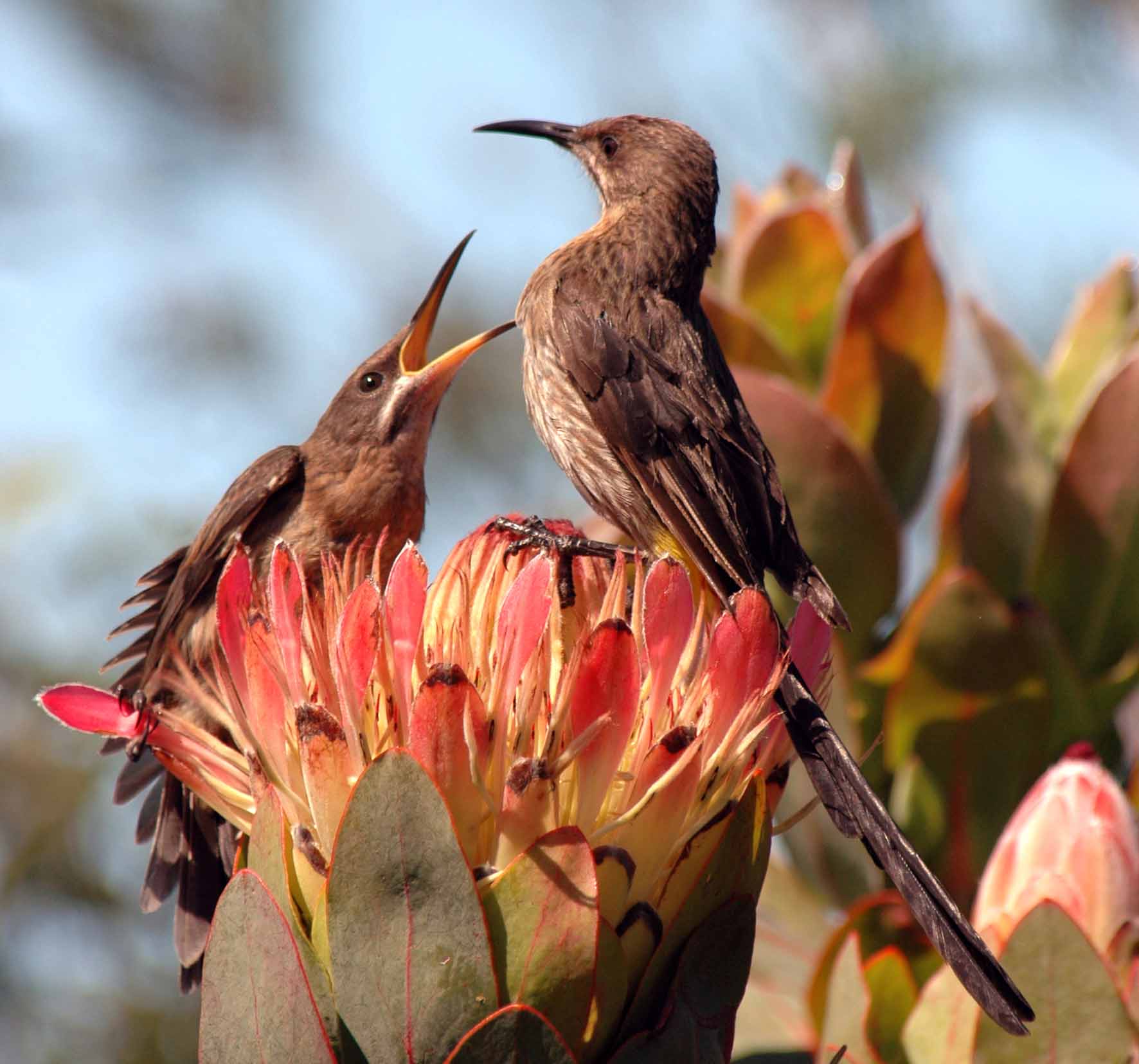
A raging brush fire is seen as destructive, but for the fynbos of the Western Cape, it is a vital necessity. Possibly the most well-known of the fynbos is the Protea. It is the national flower of South Africa and is emblazoned on the sports kit of our cricketers and other national sporting teams.

Strange as it may seem, the fynbos – literally translated from the Dutch as fine bush – community needs fire every 15 years or so. All the species have flowered and set seed for several successive years by then.
Although fire is seen as a destructive power, it is an essential event in the fynbos community, providing new opportunities for organisms to regenerate, produce offspring and then die back in anticipation of the next fire. If there are no fires for lengthy periods, some species, such as proteas, start degenerating.
The Cape Fynbos is the term given to a collection of plants mainly shrubs and comprised of species belonging to South Africa’s southwestern and southern Cape. Fynbos makes up four-fifths of the Cape Floral Kingdom, which covers an area of less than 90 000 square kilometers (the size of Malawi or Portugal) and hosts 8 600 plant species.
To put this in perspective, the British Isles, three and a half times larger, have only 1 500 plants and less than 20 of those are endemic. Table Mountain alone has almost 1 500 species in 57 square kilometers.

So special is the Cape Floral Kingdom that it has been designated as one of the earth’s six plant kingdoms and is the smallest Floral Kingdom in the world.
Fynbos flowers stay fresh for a long time and make excellent export products, especially the protea. Dried flowers and restios for arrangements of dried flowers are also marketed and exported extensively. Both Rooibos tea and honey tea are fynbos products.
Today Rooibos tea is cultivated and processed mainly in the Cedarberg area and exported. Buchu, rich in oil, is used on a large scale in medicines and as an oil base for perfume.
Currently, 12 nature reserves (51 099 ha) and four wilderness areas (123 115 ha) have been set aside in the fynbos areas. No development may be undertaken in these areas without the necessary approval.
The largest reserve at present is the 24-569-ha Hottentots-Holland Reserve (in the Strand area).

To many people, fynbos is merely seen as the drab covering on mountain slopes. At a distance, fynbos does seem like inconspicuous clumps of spiky grass, but closer examination reveals a rich variety of exquisite flowers.
Humans invaded the fynbos and besides introducing alien vegetation that chokes the fynbos growth, brought with them their fire. While fire is essential, too much is no good and in recent years, fired by the oils in the fynbos the Western Cape raging fires have cut a destructive swathe across the mountains, leaving conservationists and Government departments the unenviable task of trying to protect this amazing species.



